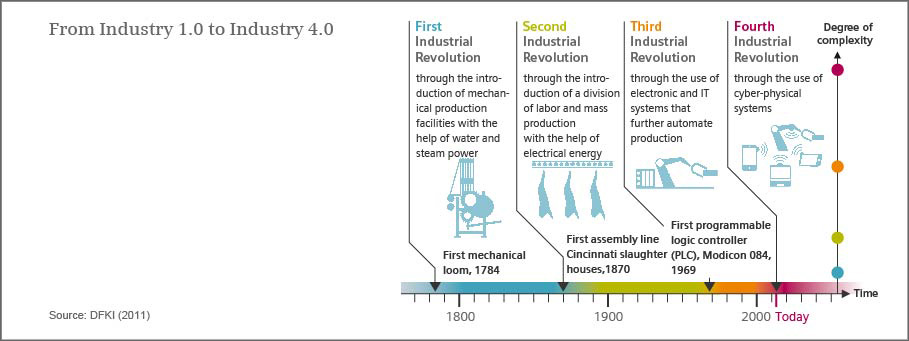
UBS’s recently produced white paper, released regarding the theme of this year’s World Economic Forum Annual Meeting in Switzerland, explores the current industrial world and the implications of a 4th Industrial Revolution. It believes that the global economy is ‘on the cusp of profound changes that are comparable in magnitude to the advent of the first industrial revolution, or the invention of the micro-chip.’
The technology driven fourth industrial revolution has significant consequences and implications for investors, the global economy, and the relevant competitiveness of the developed and emerging nations. Recent technological shifts need to be looked from a larger context, instead of looking at specific subsectors, companies and trends. This industrial revolution is based on the same principles as the first industrial revolution – extreme automation (the need of artificial intelligence in business, government and private life) and extreme connectivity (which annihilates distance, time and other obstacles to allow communication among humans and machines).
UBS reports that the economic consequences of a fourth industrial revolutions include a polarized labor force, higher savings at the top end of society, the dollar dilemma and increased cyber risk. As more and more jobs become the subject of automation and labor becomes obsolete, prospects of workers are set to diverge. Trends in labor will increasingly focus on middle-skill jobs, which could lead to increased potential of inequality in the short run, and a need for market flexibility to absorb the potential of labor and the benefits of the fourth industrial revolution.

Meanwhile, beneficiaries of the revolution are expected to grow their wealth at a faster rate. Such people, with already high saving rates, could exacerbate inequality with higher asset valuations and the current low-cost-of-borrowing climate. Since the US leads this revolution, its competitive advantages could result in a stronger dollar, leading to tightened effective monetary conditions among US dollar-linked economies. Finally, the industrial revolution increases the risk and probability of cybersecurity and geopolitical issues, but could still increase regional investment to try and improve on existing infrastructure vulnerabilities.
UBS believes Switzerland, Singapore, Netherlands, Finland, Hong Kong, Norway & Denmark, along with the industrial Titans US and UK, stand to win the most from this industrial revolution. Autos, construction and IT services are the most likely to face disruption as a result of investment, whereas industries such as AI, Blockchain and Big Data, considered the drivers behind this revolution stand to gain the most. Big data beneficiaries include firms that harness big data to cut costs or target sales; these are firms that automate big data analysis, and firms that keep big data source. Blockchain applications could benefit firms that use them to automate processes securely, to cut out costly intermediaries, and to protect intellectual property.
WeForum sums it up perfectly: ‘In 1972, Zhou Enlai, China’s premier at the time, was asked his opinion on the student revolutions that swept across France in 1968: “It is too early to say,” he replied. The fourth industrial revolution is in its infancy, and it is far too early to predict what form it will take. But the more we can understand its nature and causes, the more likely we are to reap the benefits and minimize the risks.’
